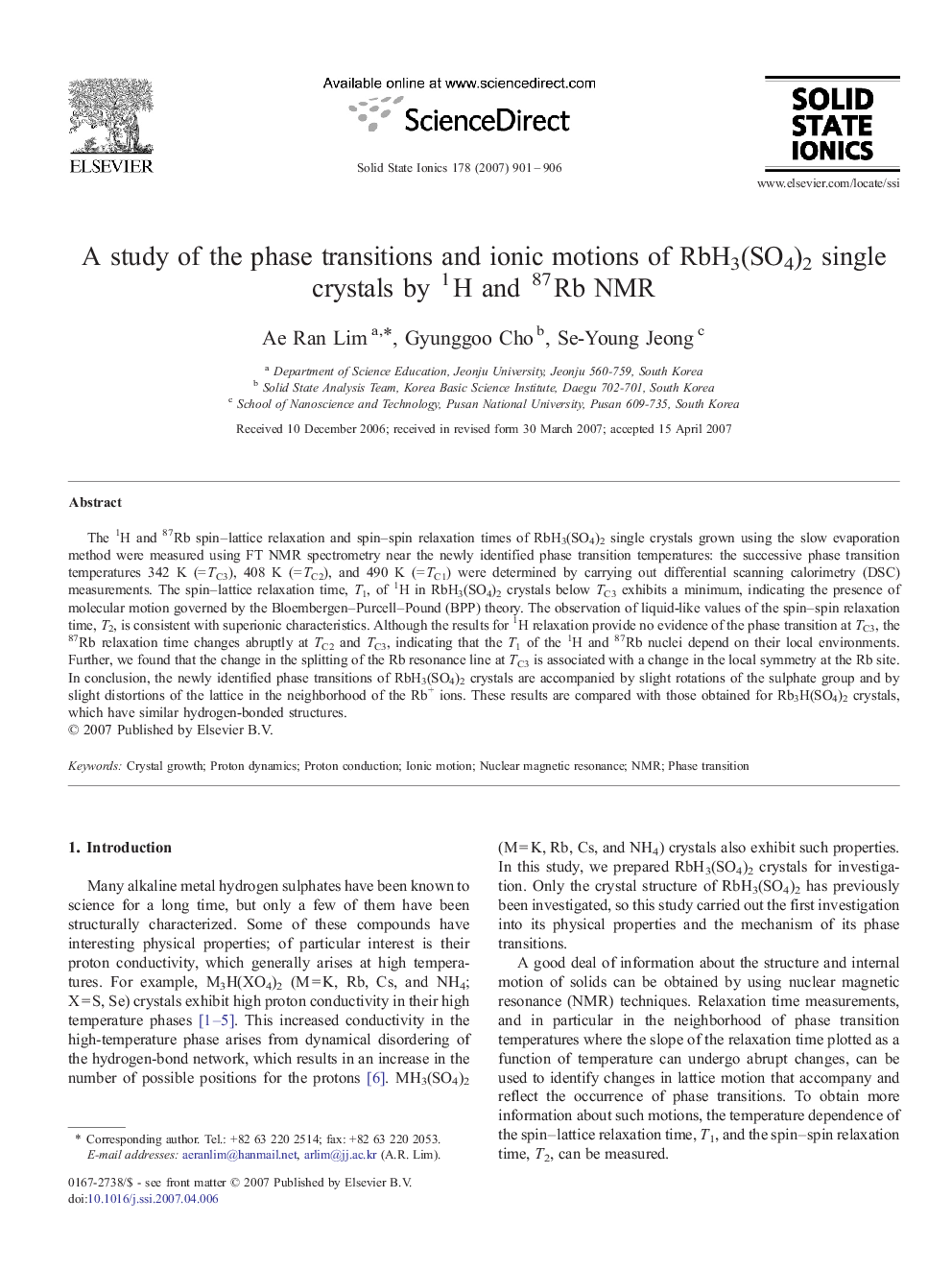| Article ID | Journal | Published Year | Pages | File Type |
|---|---|---|---|---|
| 1295312 | Solid State Ionics | 2007 | 6 Pages |
The 1H and 87Rb spin–lattice relaxation and spin–spin relaxation times of RbH3(SO4)2 single crystals grown using the slow evaporation method were measured using FT NMR spectrometry near the newly identified phase transition temperatures: the successive phase transition temperatures 342 K (= TC3), 408 K (= TC2), and 490 K (= TC1) were determined by carrying out differential scanning calorimetry (DSC) measurements. The spin–lattice relaxation time, T1, of 1H in RbH3(SO4)2 crystals below TC3 exhibits a minimum, indicating the presence of molecular motion governed by the Bloembergen–Purcell–Pound (BPP) theory. The observation of liquid-like values of the spin–spin relaxation time, T2, is consistent with superionic characteristics. Although the results for 1H relaxation provide no evidence of the phase transition at TC3, the 87Rb relaxation time changes abruptly at TC2 and TC3, indicating that the T1 of the 1H and 87Rb nuclei depend on their local environments. Further, we found that the change in the splitting of the Rb resonance line at TC3 is associated with a change in the local symmetry at the Rb site. In conclusion, the newly identified phase transitions of RbH3(SO4)2 crystals are accompanied by slight rotations of the sulphate group and by slight distortions of the lattice in the neighborhood of the Rb+ ions. These results are compared with those obtained for Rb3H(SO4)2 crystals, which have similar hydrogen-bonded structures.
